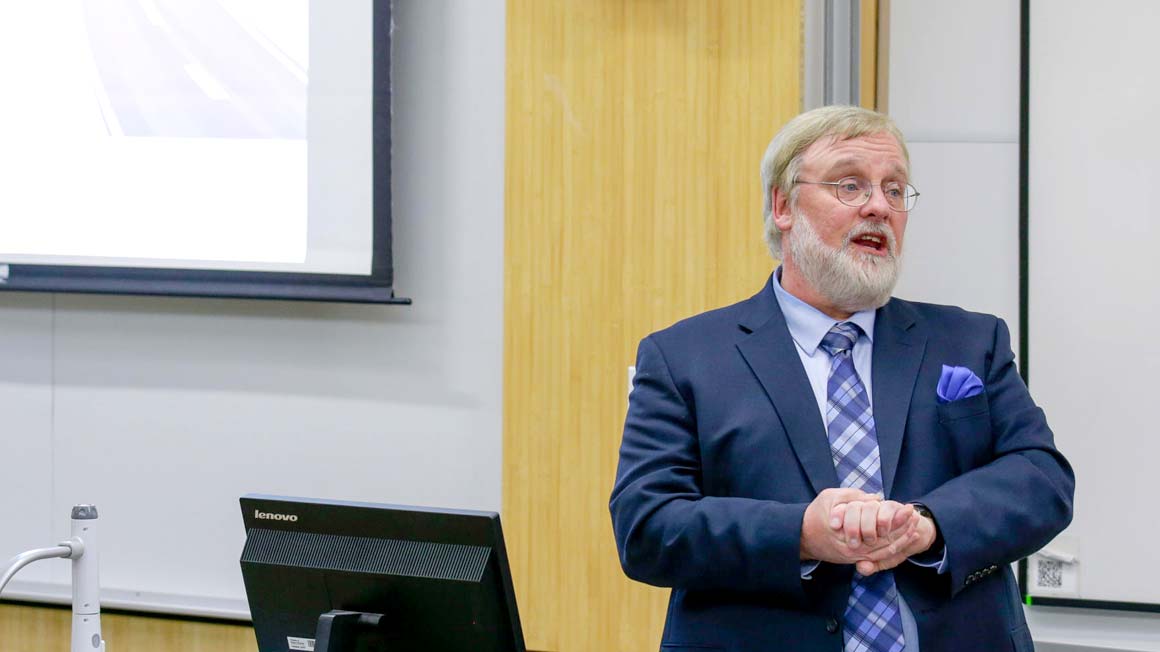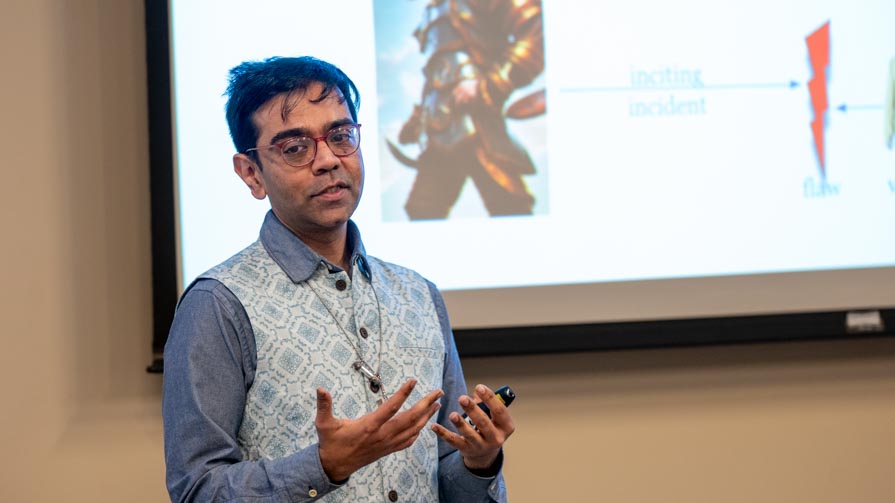Driverless cars—or automated vehicles (AVs)—have the potential to disrupt the auto industry and modify how we live and work. Car manufacturers and tech companies around the world are pumping billions of dollars into driverless car technology. But how safe are driverless cars? And how safe do they need to be?
Surprisingly, there isn’t much data with which to make informed answers, says Rick Gorvett, Ph.D., Professor and Chair of the Department of Mathematics at Bryant University and one of the nation’s top actuarial scientists and risk analytics experts.
Are we currently overestimating safety? Hard to tell, Gorvett says. “It’s not that we don’t have access to safety data—there simply isn’t a lot of it. The manufacturer could, but nobody’s sharing,” he notes.
"Statistically speaking, we're notoriously bad at paying attention when we're told somebody or something else is paying attention."
Notably, AV companies aren’t sharing with the insurance industry, either, says Gorvett. Currently, only a couple of insurance companies have worked with AV organizations. This, says Gorvett, is out of step with general practice, being far from the embedded presence the insurance industry commonly has in emerging tech markets. The paradigm-shifting nature of AVs, says Gorvett, further heightens the need.
“What the insurance industry is saying now is, let’s do that. Actuaries, part of the insurance industry, actually focus on measuring risk and the cost of risk. These are exactly the kinds of things that I think would be helpful to the automated vehicle industry. We should at least start collecting comprehensive and relevant data now—and sharing it.”
Quantify the risks—and human behavior
Actuarial involvement, says Gorvett, would enable us to quantify the evidence of additional safety of driverless cars. They can assess—and quantify—AV risk by analyzing data and thinking through a range of human behaviors. This, he says, could move the conversation on AV safety from the hyperbolic to the factual.
“You don’t have to be in discussion about automated vehicles for too long before you hear ‘93% of accidents are caused by human error. Therefore, a good AV should decrease the number of accidents by 93%.’ Well, that's not how it works. There are a number of statistical caveats you also have to consider, such as, perhaps a better driving experience causes us to drive more miles. Then, the number of accidents might not decrease.”
Gorvett presented statistical evidence of a number of areas of risk that could impact AV safety and need further investigation through quantitative analysis:
- Behavior response to technology: “Safer cars don’t equate to safer drivers. Statistically speaking, we're notoriously bad at paying attention when we're told somebody or something else is paying attention.”
- New road dynamic: “When there's a fraction of autonomous vehicles on the road and many people still driving their own vehicles, how well will they co-exist?”
- New garage dynamic: “For a while, we may very well have a highly automated car and a much more traditional car in the same garage, which will require driving adjustment when switching between.”
- Distracted driving: “There's a lot of evidence that we are driving much more distractedly than we were before. How will this impact the driving experience with the introduction of AVs?”
- Worsening driving experience: “The driving experience has worsened, even though we’ve had a lot more autonomous kinds of safety-related mechanisms added to the typical car. And it's not clear why some of these things are happening."
These are not the only areas that need further study. “Infrastructure, hacking and data privacy concerns, the liability system – there are many, many issues here that span across disciplines,” says Gorvett. “We need to start treating this as an interdisciplinary issue, getting a lot of people, technologists, car manufacturers, regulators, lawyers, actuaries, all sorts of different kinds of people involved in this. We've got to start understanding, collecting and sharing data, as well as plan for and manage all this new data.”
Gorvett’s remarks were part of “Automated Vehicles: Assessing the Risks," a talk he presented as part of the University’s Faculty Research Talks series.






